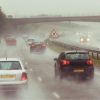
Change is inevitable, and the manner in which we drive now is vastly different from times past. But the next 10-20 years will see significant changes happen that will transform the way we drive in a very short space of time.
Let’s look at some of the coming changes that will change the way we drive forever:
Self-driving cars
Recent progress in allowing limited self-driving features to be legally used on UK roads opens the door for more restrictions being relaxed on self-driving vehicles. But with Tesla, one of the major players in the development of self-driving tech, recently making the statement that self-driving cars may ‘do the wrong thing at the worst time’, we may be further than we think from fully autonomous vehicles.
Clean air zones
Restrictions on combustion engines and rise of electric vehicles
In addition to clean air zones limiting the use of vehicles conventional fuel engines, the rise of electric vehicles is now inevitable. The UK will ban sales of non-electric vehicles from 2030, and lots of major car brands are committing to going fully electric well before then.
The change to electric vehicles will force us to adapt our habits accordingly. The obvious change will be charging: whether at home or at a station, the process of powering our vehicles is likely to remain completely different from our current habits.
The impressive acceleration of electric vehicles is another feature we’ll need to get used to. In electric vehicles, all of their torque is available from 0 RPM, giving a uniquely responsive acceleration that those who are used to petrol vehicles might find jarring at first.
Smart safety features
Almost all of the new safety features we’re seeing arrive on the market are designed to reduce the risk of what is by far the most common cause of road accidents: human error. Smart features like automatic lane keeping, autonomous emergency braking, distraction recognition and more are already here, and seeing widespread adoption among major car manufacturers. The law is changing too – we will soon see features like autonomous emergency braking become required features on all new vehicles, just like seatbelts, headlights, windscreen wipers, and many of the other gadgets we take for granted already are.
As advanced technology continues to enhance the vehicle safety, drivers will need to make sure they’re as well educated as possible to avoid misusing any intelligent features with potentially dangerous results.
Alternative transport options
As technology changes our cars, new transport options have started to spring up as alternatives to cars. E-scooters are a particularly contentious current example, with misuse, collisions, and even deaths being reported recently.
As e-scooter numbers may grow and other alternatives appear, drivers will need to be vigilant for new vulnerable road users which they aren’t used to being on the lookout for.
Changes to the Highway Code
Upcoming changes to The Highway Code aimed at improving safety for vulnerable road users, particularly cyclists, pedestrians, and horse riders will introduce a hierarchy of road users, meaning those who can do the greatest harm have the greatest responsibility to reduce the danger or threat they may pose to others.
The rules mean that instead of having equal responsibility, if you find yourself driving along next to a cyclist, you, as a driver, have a burden of responsibility to ensure the safety of the cyclist. The cyclist still has responsibility for their own safety, but the car driver would face the tougher questions in this scenario, should a collision occur.
This is only a glimpse of a few of the changes on the horizon that will fundamentally change the way we drive in years to come. It’s essential that those who drive for work especially are kept up-to-date with developments in law and technology.
Companies that invest in education and training for their drivers protect their employees from harm, save money, and make sure that their company is compliant with health and safety legislation.
If you’re interested in what IAM RoadSmart can do to protect you, your company, and your workforce, get in touch.


